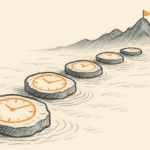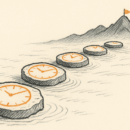What’s really wrong with customer experience? The bosses…

The first book I wrote was an angry one.
Crown Your Customer emerged from personally experiencing ridiculous customer treatment, but also from observing customers being treated like cattle all over the place. It was a call to arms both to the providers of customer care, and their victims, to stop the nonsense. In those days standards were generally lamentably low. Customers were made to queue up, wait and wait and wait, get messed up or turned away, and generally treated with disdain.
I am less angry these days.
Partly, that’s because a decade or two later, things are generally better. It might not feel like it sometimes, but businesses understand the centrality of their customers a little more deeply now. They make more of an effort to be quicker, more helpful, and more caring. For example, the speed with which regular bank transactions can be conducted these days, using digital channels, is an order-of-magnitude higher. Many businesses make it possible for us to have quicker, more pleasant experiences with them. Most have learned to consider the totality of customer experience (CX) at all touchpoints to raise their game. Many have injected new technology to make things quicker and easier.
And yet. The anger can return.
An airline recently gave my family just a few days’ notice when cancelling a flight that was to take us on a much-awaited holiday. Why was it cancelled? You guessed it, “operational reasons.” That’s bad enough, but still tolerable if amends are made. They offered to put us on a different airline’s aircraft on the same date, which we had to accept—but then they disappeared for 48 hours without any updates. We made it in the end, but only after swearing never to use that airline on that route again.
Home food delivery generally works very well all over the world these days, and is quite a feat to pull off. I do applaud the platforms that use clever incentives and algorithms to coordinate so many independent moving parts and achieve high rates of on-time delivery every day. But it can still go spectacularly wrong on a given day. I recently watched two long-established, very reputable Nairobi restaurants mess up their part of the delivery bargain.
Both failed to cook their orders in timely fashion leading to an hour or more of delay for their hungry customers. That happens—logjams can occur on busy nights. The bigger issue is about the response. In one case the restaurant manager, no less, was completely unconcerned about the order being canceled due to delays—he just shrugged and put the phone down. In the other, the supervisor handling delivery orders was doing his best, but was simply untrained for the work of juggling multiple orders, and was stressed out of his head as angry customers piled up. These restaurants seem to get the taste of their food right, but are hapless at taking on new ways of getting it to customers.
Here’s the thing, though. When we get angry as customers, whom should we be angry with? It’s tempting to take it out on the person we are dealing with directly, but the real culprits sit elsewhere. Very bad—and very good—customer experience is always about the bosses—at all levels.
Bosses make great CX a central part of strategy and mission. Bosses set standards at the top of organizations. Bosses recruit, train, and deploy employees to face customers. Bosses decide how much to spend to make things better. Bosses design processes. Bosses create response and recovery mechanisms. Bosses motivate employees to care about what happens to customers.
If the bosses do all that badly, then you get car-crash CX.
If that’s what you’re experiencing as a customer, don’t take it out on the person in front of you. They are very likely underpaid and undertrained, and just doing their best in a bad situation. Even if the service representative you are dealing with is unpleasant or incompetent, the true fault lies elsewhere—in those who instal inappropriate frontline staff, and then fail to train and monitor them.
It is very easy for higher-ups to blame bad employees and bad tech for their CX woes. A better place to point the finger would be at the mirror.
Let’s be fair, consistently great CX is one of the hardest things to pull off. It requires superhuman effort and attention to detail, as well as remarkable process efficiency. It is about talent, culture, technology, and innovation—all going hand-in-hand. Glitches and fails will occur, and must be forgiven. What is harder to forgive is disdain and lip service from the top, and CX blurbs that are all talk and no walk. An excellent business sets CX standards at the level of the shareholder and board of directors, no less, and then recruits and invests accordingly. A weak one just states “customer-centricity” as one of its core values (who doesn’t, these days) and then looks away and hopes for the best.
Great CX, then, begins with a leader who actually cares deeply about it. It is then embedded in the overarching strategy of the business, or it is just fru-fru.
(Sunday Nation, 17 March 2024)

Buy Sunny Bindra's new book
The X in CX
here »
Popular Posts
- Where are you rushing to—your funeral?June 29, 2025
- How to spot a real thinkerJune 15, 2025
- The pause that saves usJune 8, 2025
- Built the app, forgot the flowJune 22, 2025
- The map will appear—once you start walking.July 6, 2025















